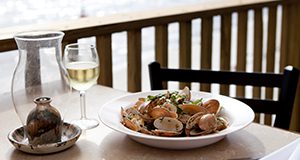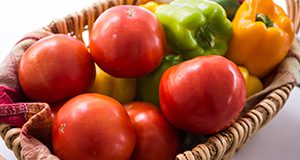Americans looking for an approach to healthy eating may want to consider the Mediterranean eating pattern. The Mediterranean eating pattern emphasizes fruits, vegetables, legumes, whole grains, nuts, and olive oil. It also includes moderate amounts of fish and poultry. This 3-page fact sheet discusses health benefits and ways to follow the Mediterranean eating pattern. Written by Sheila Rahimpour and Karla P. Shelnutt, and published by the UF/IFAS Department of Family, Youth and Community Sciences, May 2018.
http://edis.ifas.ufl.edu/fy1476
Tag: healthy eating
Healthy Meal Plans
A meal plan is a guide to help you plan daily meals and snacks. It allows you to eat foods you enjoy that provide a good balance of nutrients for your health. Meal plans can be used by anyone interested in healthy eating, and they are very helpful for people who want to manage their weight. This 20-page fact sheet is a major revision that discusses meal plans, food lists, and healthy choices. Written by Linda B. Bobroff, and published by the UF/IFAS Department of Family, Youth and Community Sciences, revised December 2017.
http://edis.ifas.ufl.edu/fy522
Healthy Eating: Lowering Your Blood Pressure with DASH
One eating plan that has been shown to prevent and reduce high blood pressure is DASH. This 3-page fact sheet is a major revision that discusses the DASH eating plan, its importance, foods included in the eating plan, and servings. Written by Valerie Weyenberg, Karla P. Shelnutt, and Linda B. Bobroff, and published by the UF/IFAS Department of Family, Youth and Community Sciences, revised December 2017.
http://edis.ifas.ufl.edu/fy1128
Healthy Eating: Understanding the Nutrition Facts Label
 The U.S. Food and Drug Administration (FDA) requires that most food packages have the Nutrition Facts label. This label contains information about nutrients in the food to help people make healthier food choices. Older adults can use the label to choose foods that provide required daily nutrients or fit with a diet plan to manage a disease or health condition. This 4-page fact sheet is a major revision that discusses the Nutrition Facts label, checking calories, limiting certain nutrients, % Daily Values, and consuming enough fiber, vitamin D, potassium, calcium, and iron. Written by Linda B. Bobroff and Karla P. Shelnutt, and published by the UF Department of Family, Youth and Community Sciences, revised May 2017.
The U.S. Food and Drug Administration (FDA) requires that most food packages have the Nutrition Facts label. This label contains information about nutrients in the food to help people make healthier food choices. Older adults can use the label to choose foods that provide required daily nutrients or fit with a diet plan to manage a disease or health condition. This 4-page fact sheet is a major revision that discusses the Nutrition Facts label, checking calories, limiting certain nutrients, % Daily Values, and consuming enough fiber, vitamin D, potassium, calcium, and iron. Written by Linda B. Bobroff and Karla P. Shelnutt, and published by the UF Department of Family, Youth and Community Sciences, revised May 2017.
http://edis.ifas.ufl.edu/fy1127


